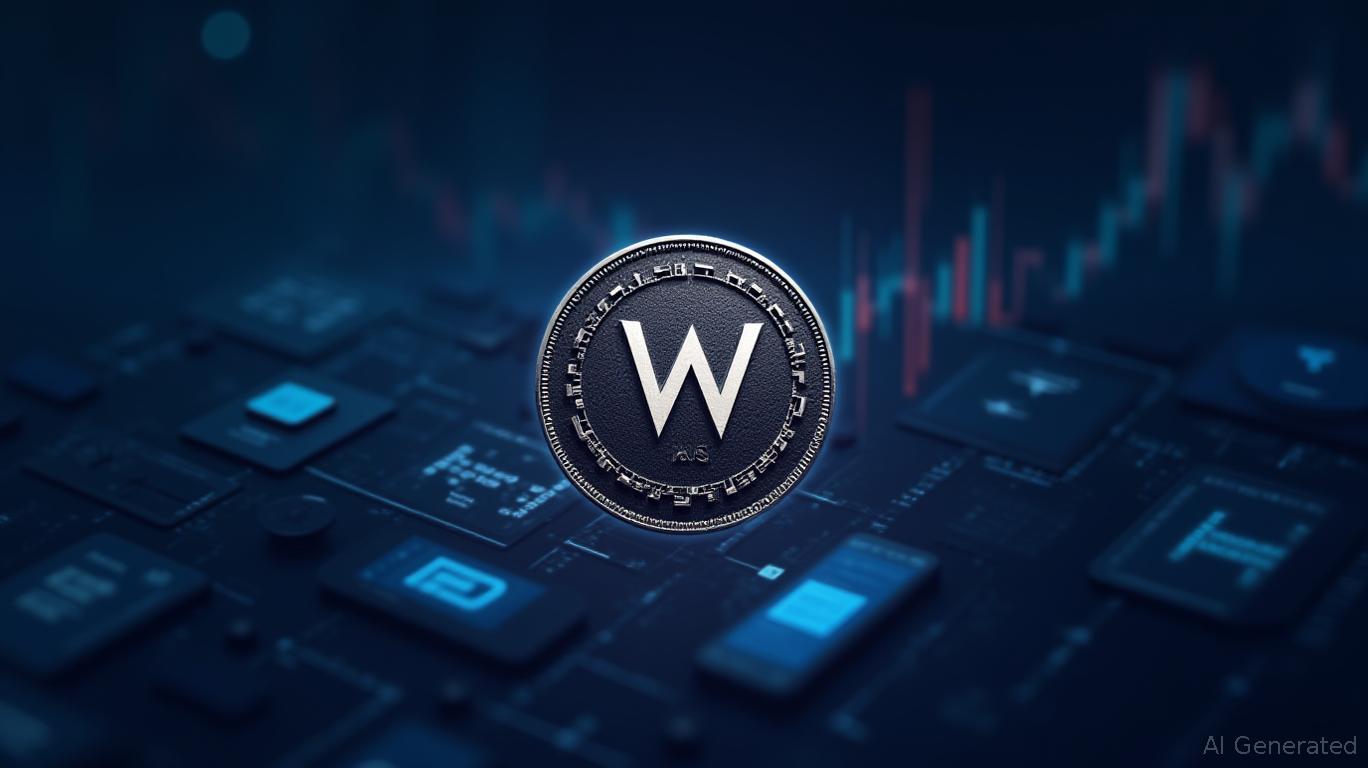XRP News Update: Pi Network Faces ISO 20022 Hurdle—Building Trust to Rival Ripple and Stellar
- Pi Network, with 50M users, joins Ripple/Stellar in ISO 20022 compliance efforts to bridge blockchain and traditional banking by 2025. - Finalizing sandbox testing for SWIFT compatibility, Pi aims to enable institutional interoperability through decentralized compliance APIs and real-time transaction verification. - Targeting emerging markets via Nigeria/Vietnam pilots and regulatory discussions in Kenya/Indonesia, Pi seeks to leverage its user base for retail/small business adoption. - Unlike Ripple/Ste
Pi Network, a mobile-centric cryptocurrency boasting a user base exceeding 50 million, is emerging as a new player in the push to adopt the ISO 20022 financial messaging protocol,

Pi is nearing completion of its compliance modules, which are currently undergoing final sandbox evaluations. The team is working to deliver a version that will be compatible with institutions using SWIFT. Achieving this would allow for smooth interoperability—an essential requirement for institutional integration. The project is also putting its decentralized compliance APIs through rigorous testing, enabling both developers and financial organizations to instantly verify Pi transactions. These solutions are designed to tackle regulatory issues and boost transparency, a significant challenge for cryptocurrencies aiming for broad acceptance, according to
Pi's future plans feature two main initiatives: an inter-chain liquidity platform for exchanging Pi with stablecoins such as
The team has also initiated regulatory talks in Kenya, Indonesia, and Colombia, focusing on sandbox licensing and digital asset categorization. Experts believe these preliminary steps could help Pi gain recognition as a "compliant" digital asset in markets where regulations are still taking shape. Additionally, Pi has entered into confidentiality agreements with two undisclosed Asian fintech companies to explore remittance and microfinance scenarios, hinting at possible collaborations with established mobile banking networks, according to Coinfomania.
Ripple and
Pi, in contrast, offers a distinct advantage: a vast community of 50 million active users. While Ripple and Stellar primarily serve institutional partners, Pi's grassroots approach could drive adoption among individuals and small businesses. Its decentralized compliance features and the planned decentralized exchange are designed to further align with international financial regulations, potentially enabling peer-to-peer trading and liquidity farming by December 2025, as highlighted in
Some critics point to Pi's extended development timeline and the absence of transparent market metrics, including postponed open mainnet access and a lack of independent audits. The recent disclosure that the core team sold 1.2 million PI tokens has also sparked debate over the project's tokenomics and governance. Unlike Ripple and Stellar, Pi's regulatory compliance has yet to be proven in real-world institutional settings, and its ISO 20022 integration remains under evaluation.
Tom Zschach, SWIFT's Chief Innovation Officer, has stressed that technical compliance alone does not guarantee acceptance by the global banking sector. Elements such as trust, governance, and impartiality are vital. While Pi's decentralized node structure and community-led governance are in line with these values, institutional players are expected to require thorough validation before embracing the platform, as noted by CCN analysts.
Pi's prospects in the ISO 20022 arena depend on its ability to deliver on its roadmap, gain regulatory approval, and prove its practical value. Should it meet the November 2025 timeline alongside SWIFT's worldwide migration, Pi could emerge as a credible alternative to XRP and
---
Disclaimer: The content of this article solely reflects the author's opinion and does not represent the platform in any capacity. This article is not intended to serve as a reference for making investment decisions.
You may also like
WEMIX Enhances Protection through CertiK Partnership as Stablecoin Ambitions Face Regulatory Challenges
- WEMIX partners with CertiK to enhance security and compliance for its KRW-backed stablecoin projects amid regulatory scrutiny. - Bank of Korea warns of depegging risks and institutional trust gaps in private stablecoins, citing historical failures like Terra/Luna. - WEMIX's $7.7M token buybacks aim to stabilize value after June 2025 delistings caused a 67% price drop, contrasting with bearish market sentiment. - The Legend of YMIR game's G-WEMIX token seeks to boost utility, though Web3 gaming's speculat

Solana News Update: Crypto's 2025 Divide: Solana Attracts Institutions, MoonBull Draws in Retail Investors
- In late 2025, Solana (SOL) gains institutional traction via partnerships like Western Union's USDPT stablecoin and ETF launches, while MoonBull ($MOBU) attracts retail investors with a 9,256% presale return projection. - Solana's ETF debut generated $64M in volume but faced post-launch price declines, highlighting reliance on adoption and utility for sustained growth amid stable geopolitical trade conditions. - MoonBull's "Mobunomics" combines 95% APY staking, token burns, and referral incentives, creati

XRP News Today: With Trump Urging the Fed, Crypto Markets Consider Interest Rate Reductions and Market Fluctuations
- Trump's pressure on the Fed to cut rates intensifies crypto market speculation ahead of October 29 policy meeting. - Bitcoin shows resilience with $400M TVL growth, while XRP surges 88% on ETF launches and institutional demand. - Fed's dovish pivot could boost crypto via weaker dollar, but hawkish surprises risk pullbacks amid Trump-Xi summit uncertainty. - Institutional adoption accelerates with new ETFs and staking products, signaling broader crypto market legitimacy. - Trump's 4% GDP growth forecast a

Solana News Update: SEC's Staking Guidance Opens Door to $69.5M Solana ETF Inflows, Signaling a Change in Institutional Adoption
- Bitwise's BSOL ETF raised $69.5M on its NYSE debut, becoming the first U.S. spot Solana ETF offering 7% staking yields post-SEC PoS clarity. - BSOL outperformed rival SSK ($12M) by leveraging Solana's high-throughput blockchain and a 0.20% fee (waived initially), contrasting SSK's 0.75% expense ratio. - SEC's May 2024 guidance on non-securoty PoS activities enabled regulated staking products, accelerating institutional adoption of altcoin ETFs. - JPMorgan forecasts $3-8B in Solana/XRP ETF inflows within
